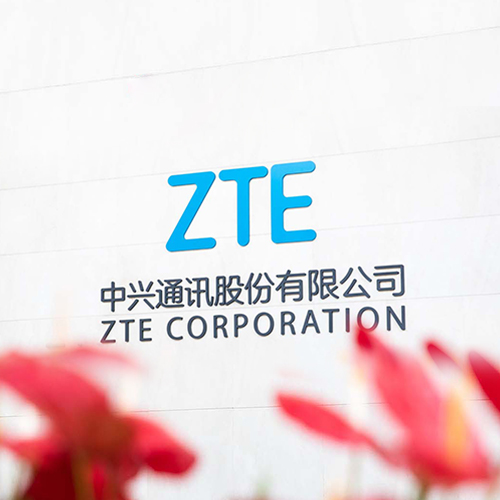27 November 2019, Shenzhen, China - ZTE Corporation (0763.HK / 000063.SZ), a major international provider of telecommunications, enterprise and consumer technology solutions for the Mobile Internet, today announced its partnership with China Telecom to complete the verification of the industry's first FAST (FDD Assists Super TDD) solution at 2.1GHz and 3.5GHz in Shenzhen, China.
Based on China Telecom’s uplink enhancement technology, this solution enables spectrum to reach its full potential by integrating time and frequency domains and constructing high-quality 5G networks with excellent performance and coverage.
China Telecom’s innovation of the "uplink enhancement" concept enhances the 5G uplink by using low frequency bands, such as 1.8GHz and 2.1GHz, to improve 5G network coverage and performance. For China Telecom's existing 2.1GHz FDD and 3.5GHz TDD bands, ZTE and China Telecom has launched the uplink enhancement FAST (FDD Assists Super TDD) solution.
Based on the complementary qualities of TDD and FDD, in 3.5GHz weak uplink area, the terminal can transmit data at a high speed based on the 2.1 GHz frequency band. In addition, it can continue to make use of the advantages of 3.5GHz in bandwidth and large-scale array antennas to benefit from the downlink ultra-high rate.
In other areas with quality 3.5GHz coverage, the potential of 2.1GHz and 3.5GHz frequency bands can be fully utilized. This enables the terminal to transmit uplink data, in conventional UL CA mode, via three channels on two frequency bands at the same time. In the time domain, all the uplink frequency bands of FDD are fully utilized.
In addition, by deeply analyzing the features of frequency division duplex at 2.1GHz and time division duplex at 3.5GHz, the innovative CA with transmission mode switching in time domain, is based on multiple uplink carriers for time division transmission. This makes the full use of downlink timeslot resources.
To make the most effective use of the uplink resources of TDD and FDD, the terminals that only support two Tx-channel transmissions can flexibly switch between two channels of NR 3.5GHz and one channel of FDD 2.1GHz. At the same time, the downlink throughput can be improved in the FDD and TDD band aggregation mode, so that the best performance can be obtained in the uplink and downlink directions in the complicated wireless environment.
The test shows that, the uplink rate of a single user can be up to 40% higher than that of a single carrier (3.5GHz) when time division multiplexing (CA) is used. When conventional UL CA is used, the maximum increase of the single-user uplink rate is 60%. In addition, through high and low-frequency aggregation, the downlink user experience rate in both conditions can be increased by 20%, compared with a 3.5GHz single carrier.
In the future, ZTE will continue to partner with China Telecom to explore the application of new 5G technologies and functions in commercial networks, improve network quality, build 4G and 5G top-quality networks and provide better network services.
ZTE is a provider of advanced telecommunications systems, mobile devices, and enterprise technology solutions to consumers, operators, companies and public sector customers. As a part of ZTE’s strategy, the company is committed to providing customers with integrated end-to-end innovations to deliver excellence and values as the telecommunications and information technology sectors converge. Listed in the stock exchanges of Hong Kong and Shenzhen (H share stock code: 0763.HK / A share stock code: 000063.SZ), ZTE sells its products and services in more than 160 countries.
To date, ZTE has obtained 35 commercial 5G contracts in major markets, such as Europe, Asia Pacific, Middle East and Africa (MEA). ZTE commits 10 percent of its annual revenues to research and development and takes leadership roles in international standard-setting organizations.
